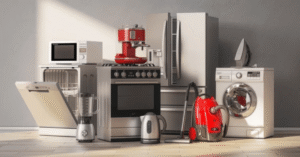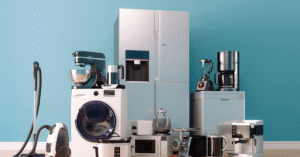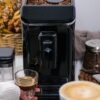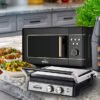The Right Way to Clean and Maintain Your Blender
Have you ever noticed your blender not working as smoothly as before? Or maybe there’s a lingering smell even after washing it? The efficiency of a blender declines when not properly cleaned while improper maintenance can result in altered food tastes. More importantly you can maintain your blender in optimal condition throughout numerous years through proper cleaning practices. Here in this blog, you will learn about the most useful tips that assist you in maintaining your blender and aids in optimal functioning of your blenders.
Why Regular Cleaning and Maintenance Matter?
Keeping your blender clean isn’t just about hygiene, it also helps:
- Prevent residue buildup that can lead to bad odors.
- Extend the lifespan of your blender’s motor and blades.
- Ensure smooth blending without food particles getting stuck.
- Maintain food safety by preventing bacterial growth.’
Step-by-Step Guide to Cleaning Your Blender
Here is the breakdown of the step-by-step guide to clean your blender efficiently:
-
Quick Rinse After Every Use
Right after blending, rinse the jar with warm water to prevent food from drying and sticking.
-
Deep Cleaning with Soap and Water
- Fill the blender jar halfway with warm water.
- Add a few drops of dish soap.
- Blend on high for 30 seconds to remove any residue.
- Rinse thoroughly with clean water and let it air dry.
-
Removing Tough Stains and Odors
For stubborn stains or lingering smells, blend a mixture of:
- 1 cup water
- ½ cup vinegar
- 1 tablespoon baking soda
- Let it sit for a few minutes before rinsing.
-
Cleaning the Blades
- Carefully remove the blades (if detachable) and wash them separately.
- Use a soft brush or sponge to clean around the sharp edges.
- Dry the blades immediately to prevent rusting.
-
Wiping Down the Base
- The blender base contains the motor and should never be submerged in water.
- Use a damp cloth to wipe off any spills or food splatters.
- Dry it completely before plugging it back in.
Tips for Maintaining Your Blender
You can maintain your blender with the following effective tips:
- Avoid Overloading: Always check the maximum fill line to prevent motor strain.
- Use in Pulses: Instead of running continuously, use pulse mode for better blending and motor protection.
- Sharpen or Replace Blades: If blending takes longer than usual, the blades may need sharpening or replacement.
- Store Properly: Keep the blender dry and store it with the lid off to avoid moisture buildup.
Final Thoughts!
Regular maintenance of a blender produces better functionality and increases its operational duration. The combination of these basic cleaning procedures and maintenance practices will ensure your blender stays fresh and odorless while it continues to function smoothly for multiple years. Paying attention to regular cleaning as a part of your routine operating practice will give you effortless blending without any problems. Are you seeking a powerful yet long-lasting blender? Check out GeneralTec to find the top choices for your needs.
FAQs
-
How often should I deep clean my blender?
Deep clean your blender at least once a week to prevent residue buildup.
-
Can I put my blender parts in the dishwasher?
Check the manufacturer’s instructions most blender jars and lids are dishwasher-safe, but the motor base should never be submerged in water.
-
Why does my blender smell bad?
Food residue and moisture buildup can cause odors using a vinegar and baking soda solution for deep cleaning.















Add comment